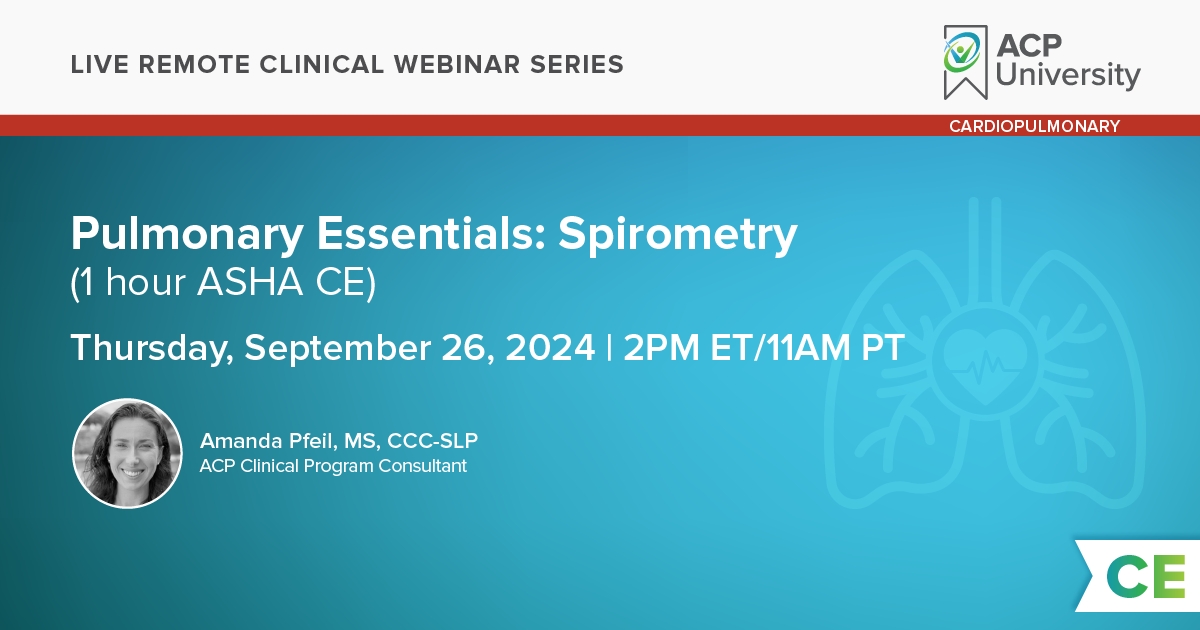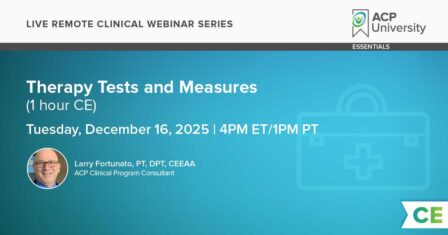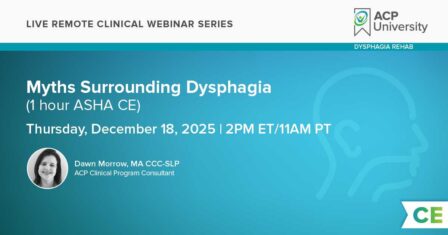Pulmonary Essentials: Spirometry

Date and Time
Location
Virtual Event
About this course:
Spirometry assessment and exercise can be easily incorporated into pulmonary rehabilitation to optimize patient outcomes. This course provided the essential information to understand how to assess and incorporate spirometry into breathing exercise, differentiate between obstructive and restrictive lung disease, and construct evidence-based pulmonary and dysphagia rehabilitation programs.
Instructor:

Enroll Now
Please note: You will not be able to register for webinars without an active
ACP University (LMS) account.
Existing Account
Auto-Enrollment
For the best experience, download the Adobe Learning Manager App and use the below QR code to automatically enroll anytime leading up to the start of the course.

Existing Account Enrollment Request
If you already have an account but can’t scan the QR code,
complete our form and we will add you to the course.
Requests must be received 24 hours prior to the course’s scheduled start.
ACP University Account Request
An active ACP University (LMS) account is required to register for this course. If you don’t have an account, please reach out to your Clinical Program Consultant for your facility-specific learner link. If you don’t recall who your CPC is, reach out to us at [email protected].
Related Events

December 16, 2025
This one hour intermediate level course for PT/PTAs, OT/OTAs, and SLPs provides instruction on therapy outcome measures. It discusses the reasons for performing and tracking outcome measures, identifying evidence-based tests, reviews appropriate psychometric properties, and helps guide clinicians in selecting patient-specific and practice-appropriate tests and measures. Through a combination of small class size and lab activities, this course provides the individual attention necessary for clinicians to understand the importance of outcome measures in therapy practice.

December 18, 2025
This course is offered for ASHA CEUs (Intermediate level, Professional area). This intermediate level course for SLPs provides overview of common myths surrounding swallowing, dysphagia rehabilitation, and the scientific basis for therapeutic interventions. The course also includes practical successful application of surface EMG and provides participants an opportunity for a question and answer session.
